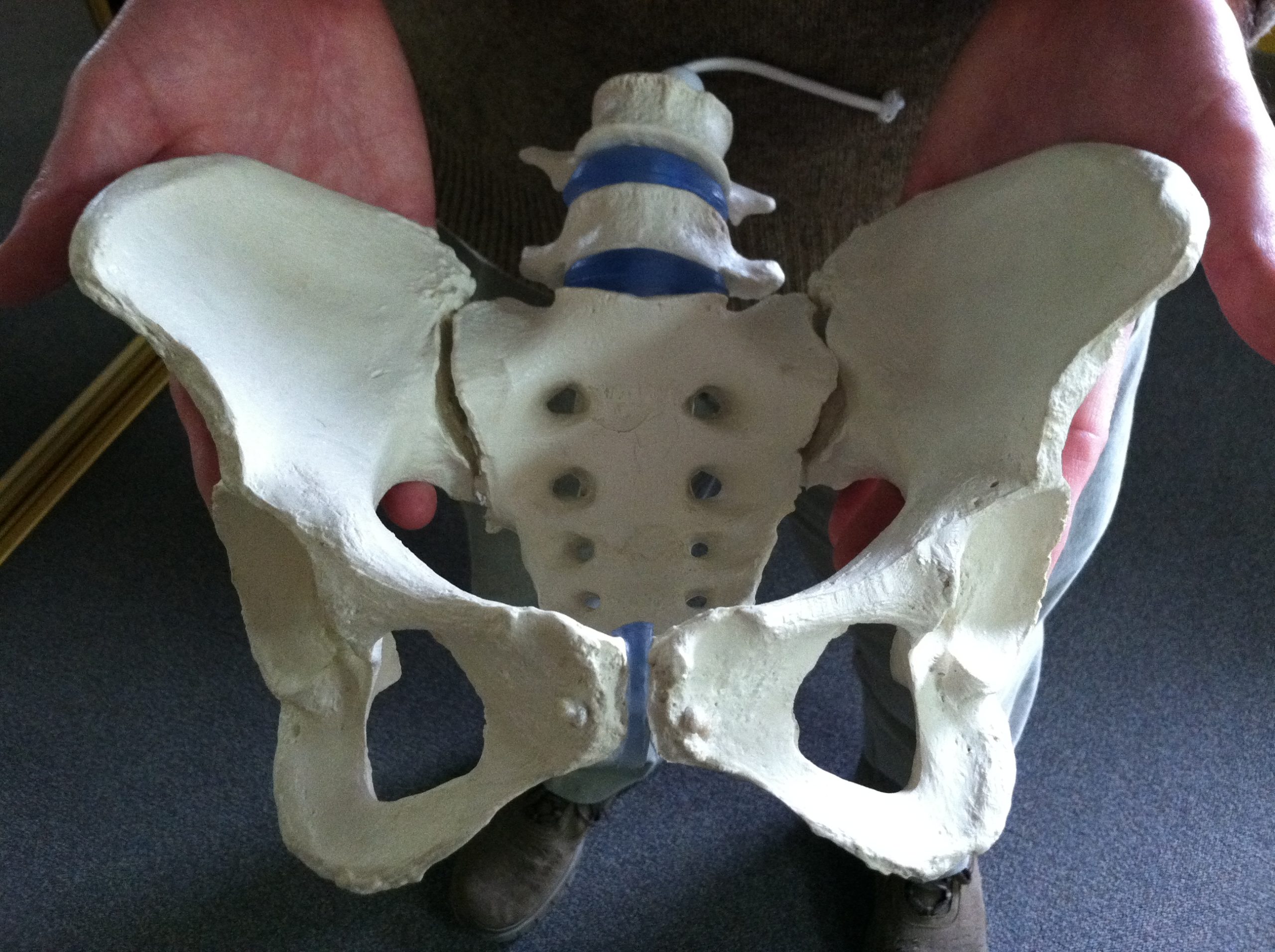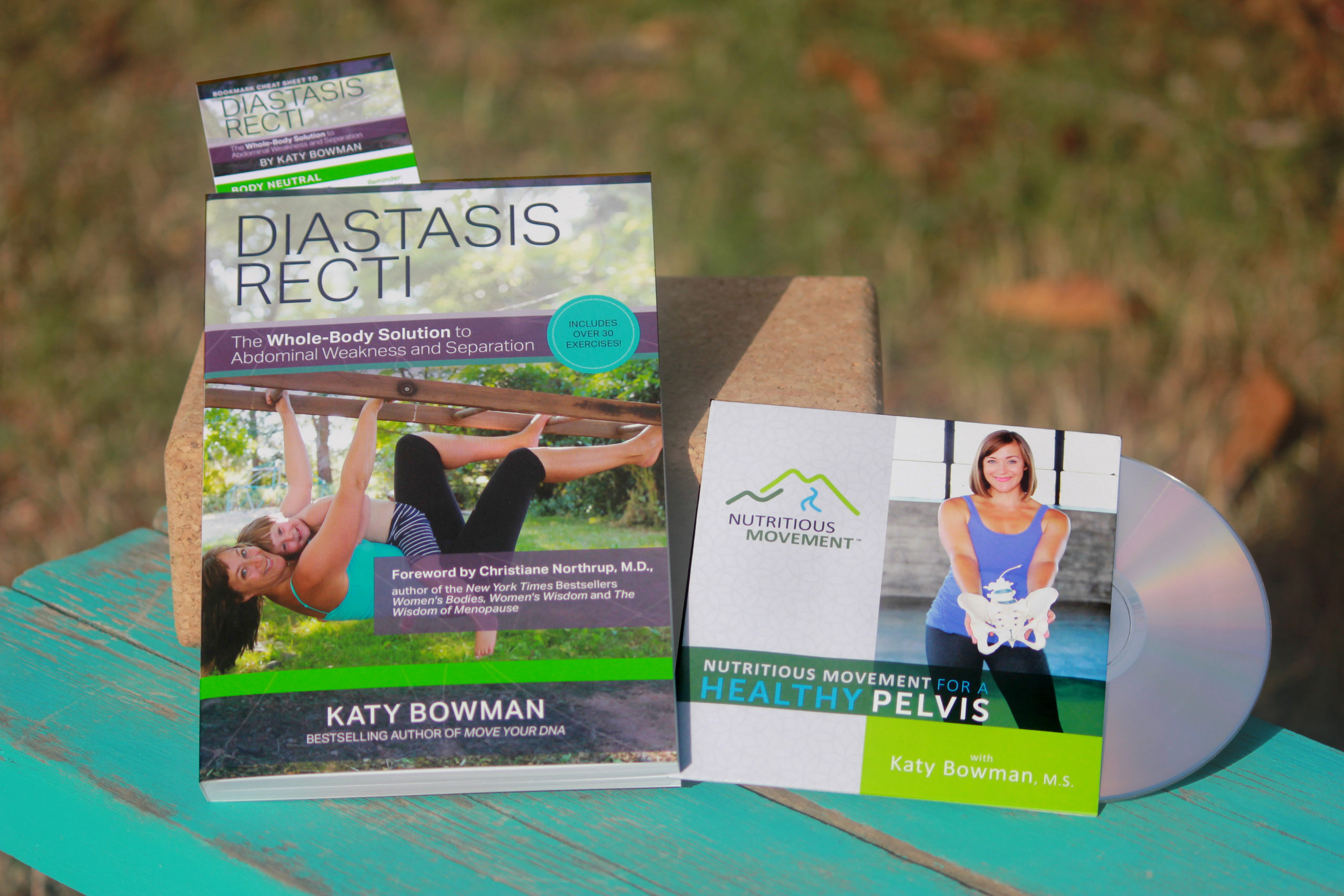While I haven't written my "whole-body pelvis" book yet, I've written and filmed so many pieces on these matters. To make it easier for you to develop a fuller picture from various sources, I've created this note, full of links to articles and posts and podcasts and videos about all things “pelvis.” Click through the links to explore the articles in depth. I regularly send out emails with new exercises and movements to try; sign up for my newsletter to receive these lessons!
Our movement philosophy
When it comes to issues of the pelvis (and really, issues of the body in general), we begin with the ideas that a) our bodies are evolved for much more movement and diversity in movement than they get now, and that b) because movement is such a vital, essential input, any “failing” of the body should also be considered in terms of “movement malnutrition.” (You can read Move Your DNA for more on that.)
Also, we don’t automatically view pelvic ailments as being isolated to the pelvis; there are simply too many moving parts outside of our pelvic anatomy that still affect how pelvic anatomy works. The pelvis is the junction of many parts, including those seemingly far away (e.g., did you know one of your quadriceps muscles connects your pelvis to your shins?) and is affected by your movements. Not only obvious movements like jumping, but breathing movements too.
All of this isn’t to say that all pelvic issues are a result of a lack of a specific type of movement, instead, that a broad understanding of the mechanics of how all your parts move together is helpful when it comes to troubleshooting this area.
There are physical therapists that specialize in the pelvic floor; if you require therapy, ask your local heath care team for a recommendation. What you will find below are exercises designed to get a pelvis moving more relative to the hips and torso, exercises that get the sacrum moving more relative to the rest of the pelvis, exercises and alignments to help reduce excessive downward pressures, and information and explanations as to why all these mechanics matter.
About the anatomy
The movements of the pelvis and pelvic floor can quickly become complex, but there are also basic lever systems of the pelvic floor to consider. One of these simple lever systems is the sacrum—toggled on one side by the pelvic floor and on the other side by the gluteal (butt!) muscles.
The bones that make up the pelvis are the sacrum and the two os coxae ("hip bones"), but other bones that affect the leverage of pelvic muscles include the femurs (thigh) and lower leg bones. This is why our “healthy pelvis” information includes so much about leg movement, and really focuses on butt and thigh movement. The way the legs move (or don’t) directly impacts the forces produced in the pelvic floor. The inclusion of these muscles in pelvic-floor discussions really started after what I’ll call “the great Kegel debates” launched, right from these pages, back in 2007!
Truly, the work here isn’t about “to Kegel or not.” It’s more that the movements a healthy, robust pelvis requires go way beyond one exercise (a Kegel). Our work back in 2007 also pointed out that pelvic-floor disorders, for many, are due to too much tension, rather than weaknesses stemming from too little tension. When too much tension is the source of the issue, Kegels might be contraindicated.
ARTICLES
The articles below explore the mechanics of how whole body movement can affect the health of the pelvic floor, contain simple alignment adjustments that quickly change the way you’re loading your pelvis and core, and easy (and easy-ish) exercises to get your pelvic parts moving more
My Pelvic Position in 2020 (read this first)
Stance
Mind Your Pelvis
Neutral Pelvis
Neutral Pelvis, Too
Are You A Rib Thruster?
Butt What About Kegels?
4 Fast Fixes for Pelvic Floor Disorder
Under Pressure (how do things inside the body move out?)
Easier, gentler, foundational exercises:
Get Off Your Tailbone And Move Your Piriformis (exercises: "Number 4" Stretch)
Why and How to Pelvic List (exercises: Pelvic List and Calf Stretch)
You Don’t Know Squat (exercises: squat prep exercises)
You (Still) Don’t Know Squat (exercises: more squat prep exercises)
A User's Guide to Hamstrings (exercise: Strap Stretch for the hamstrings)
Forward Bend: Modified (exercise: Forward Bend)
Snapping Psoas, Hidden Tiger (exercise: Psoas Release)
Quad Stretch Fakeout (exercise: Quad/Rectus Femoris stretch)
Have Psoas, Will Travel (exercise: Lunge, for increasing hip extension)
When the Poop Hurts (exercise: Abdominal Release)
How to Move Your Breathing Parts Better (exercises: many for supple "breathing" walls that can reduce downward pressure, read Under Pressure above for more info)
More challenging movements (that become easier if you do the exercises above first):
Try this Click-clack exercise (from Diastasis Recti).
Finding Your Hip Rotators (exercise: Human Pez Dispenser)
Get Your Butt Here (exercise: Arabesque)
Single-legged Squat (exercise: Single-legged squat)
Rolling or Thunking Like a Ball? (exercise: rolling like a ball)
Menstruation
Menstruation is a movement. It's a natural human movement. Until recently it's been done in dynamic bodies and now it's done in sedentary bodies and this is important to note when you're troubleshooting issues like dysmenorrhea, heavy bleeding, etc. Below you'll find more details on what's happening in the uterus as well as why we might consider all the pelvic movements when we're troubleshooting this area.
How Your Period Works
Menstruation is a Movement
Aching for an Answer
A simple “healthy pelvis” exercise program
Books
While I don’t have a book devoted to the pelvis it does feature prominently in two of my books.
Diastasis Recti: The Whole-Body Solution to Abdominal Weakness and Separation is all about pressure. While it focuses on what excessive pressure and tension can create when directed in the forward direction, i.e. abdominal separation, all the info applies for pressure applied downward, as found can be found in pelvic floor tension and organ prolapse.
In Move Your DNA, read the entire thing, but pay extra attention to Chapter 10: Not Your Great-Great-Great-Great- Great-Great-Great-Great-Great-Great-Grandparents Pelvis, as well as the chapter on walking.
Videos
If you’re looking for a daily, simple “healthy pelvis” routine you can do at home, look no further. This program has eleven exercises and five lifestyle tips to improve your pelvic health.
Nutritious Movement for a Healthy Pelvis DVD or download
More in-depth exercise programming
For more in-depth movement instruction and exercises for the pelvis and core (and how they work together, as well as with your whole body), check out our video course Nutritious Movement Improvement.
PODCASTS: LISTEN AND LEARN

If you’re tired of reading about the pelvis or if you’re wanting to go deeper with some audio explanations, find relevant podcast episodes/interviews below!
Delicious Butt Function—Podcast Episode #5
The Core—Podcast Episode # 10
The Balls Show—Podcast Episode #15
Cycling—Episode #33
Thoughts on Incontinence—Podcast Episode #34
Movement, Period—Podcast Episode #50
You Do Know Squat—Podcast Episode #91
Why to Stop Doing Kegels and Squat Instead (interview with Wellness Mama that's not exactly on why to stop doing Kegels, but why pelvic floors need more than Kegels)
Find a teacher in your town
We have teachers all over the world who can help with these moves. To find someone in your area, check out our Find-A-Teacher map!
Remember to sign up for my newsletter if you want to stay updated on new developments, articles, and podcasts!






